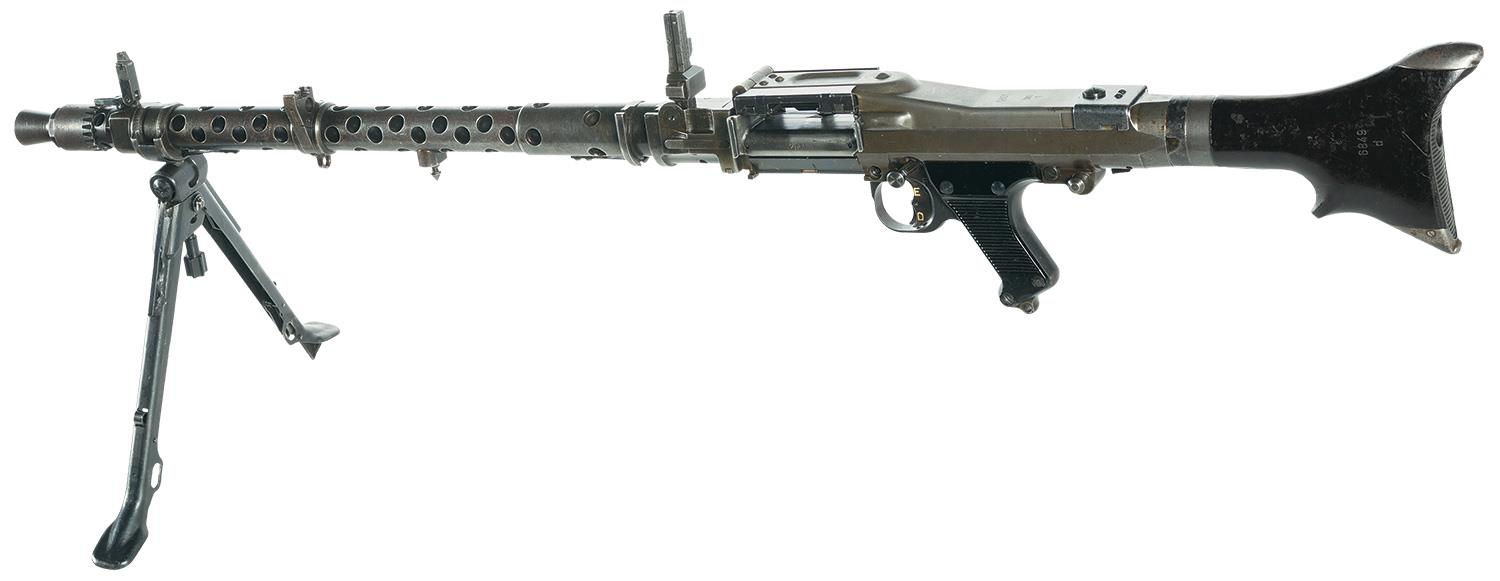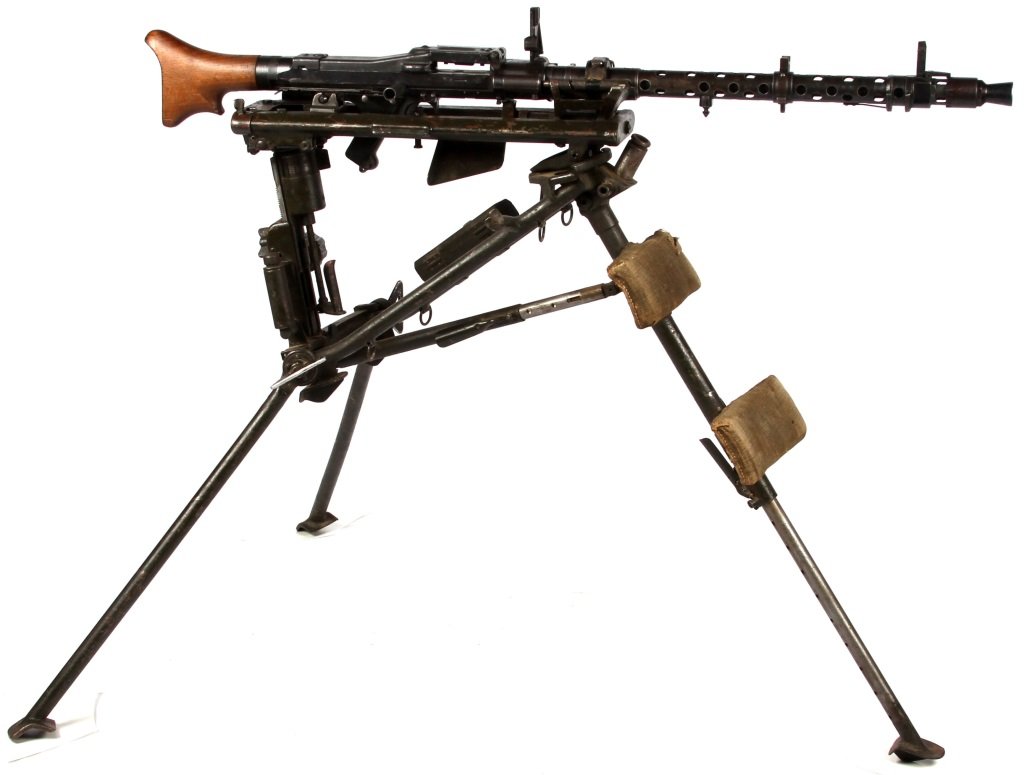"MG 34"
A German MG34 machine gun nest with a team of 3 members (gunner, ammo-carrier and spotter) scanning the battlefield. The term “machine-gun nest” identifies a defensive position dug on the ground to maintain the lowest possible profile, minimizing detection by the enemy. Procedure called for higher ground on the back of the soldiers to minimize silhouetting. The team has set up the MG34 on a tripod to maintain the machine gun stable on the ground and to increase practical range. The rate of fire was so prodigious (900 rpm) that the gunner would lose aim if fired from the arm only. Belt-fed ammo (250 rounds) allowed long cadence of fire. However, this meant faster heat generation that could bend the barrel. So, after a long burst (250 rounds) the gunner changed the barrel, a task that took 15 seconds to complete. A bipod was available alternatively. In this case, the gunner would fire shorter burst of fire using 50-round magazines. The machine gun sits some 15-20 cm (6-8 in.) from the ground to prevent the enemy from avoiding fire by hugging the terrain. The MG42 started to replace the MG34 in 1942 (after Barbarossa).
| Name | MG 34 |
| In Service | 1934-1945 |
| Total produced | 577,120 |
| Manufacturers |
Rheinmetall-Borsig AG Soemmerda Mauserwerke AG Steyr-Daimler-Puch AG Waffenwerke Brünn |
| Caliber (ammo) | 7.92mm (x 57mm Mauser) |
| Length (overall) | 48 in (122 cm) |
| Weight with bipod | 26 ½ pounds (12 kg) |
| Weight with tripod | 42 pounds (19 kg) |
| Feed | 250 round belts or 50 round drum-magazines |
| Rate of fire (cyclic) | 900 rpm |
| Rate of fire as LMG (bipod) [practical] | 100-120 rpm |
| Rate of fire as HvMG (tripod) [practical] | 300 rpm |
| Change of barrel | Every 250 rpm |
| Effective Range as LMG | 600-800 meters |
| Effective Range as HvMG | 2000 – 2500 meters |
| Muzzle velocity | 765 m/s |
| Sights | Iron sights, AA sights (ring), Telescopic sights |


